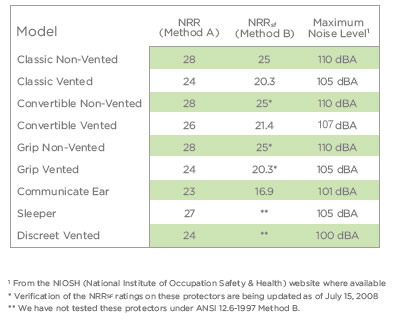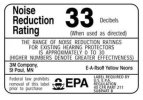Google: Noise Reduction Rating (NRR)What does this mean? I'm pretty new to this but agree that the headsets don't work well with glasses and safety glasses. I have been looking for the small inserts with a band on them like the link above. Pretty sure I'll try the out next..
They explain it better than I can.
I've been using the Peltor NRR29s for a decade at least. They're the best I've found for in the shop or on a busy range.
I've tried other muffs that came with a glorious sales pitch and the batteries were included. For me, it was a total waste of money.
The only time I install earbuds under the Peltor muffs is when I'm cutting grass. NEVER in the shop.
YMMV


